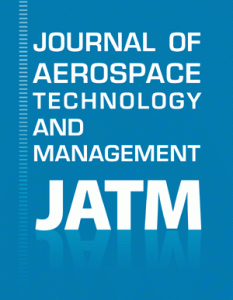By Vera de Paula, Aeronautical engineer and Master of Science; Maiara Rosa, Ph.D. Candidate; Henrique Rozenfeld, Professor, University of São Paulo, São Carlos School of Engineering, Production Engineering Department, São Carlos, SP, Brazil
 A common challenge among aircraft manufacturers throughout the world is to ensure that the developed aircraft achieve the performance planned in the conception phase. Weight and other aircraft mass properties, such as the center of gravity and moments of inertia, strongly influence the performance of an aircraft. Since aircraft are complex systems composed of several subsystems, as the phases of the project advance, the aircraft weight tends to become increasingly bigger than the value that was agreed on to achieve performance (BOZE; HESTER, 2009). This weight increase leads to rework since subsystems must be continuously recalculated according to the new mass properties of the aircraft, consequently leading to project delays (ANDREW, 2001; KRAFT, 2010).
A common challenge among aircraft manufacturers throughout the world is to ensure that the developed aircraft achieve the performance planned in the conception phase. Weight and other aircraft mass properties, such as the center of gravity and moments of inertia, strongly influence the performance of an aircraft. Since aircraft are complex systems composed of several subsystems, as the phases of the project advance, the aircraft weight tends to become increasingly bigger than the value that was agreed on to achieve performance (BOZE; HESTER, 2009). This weight increase leads to rework since subsystems must be continuously recalculated according to the new mass properties of the aircraft, consequently leading to project delays (ANDREW, 2001; KRAFT, 2010).
Aiming at reducing rework excess, aircraft manufacturers adopt the process of Mass Properties Management (MPM). However, those companies still face challenges in integrating the MPM process and development process effectively. In the paper “Review of practices to integrate aircraft mass properties management and development processes,” which was published in the Journal of Aerospace Technology and Management (vol. 12), the authors investigate MPM in aircraft projects and propose practices to integrate MPM and development processes, aiming to minimize deviations on the planned aircraft performance.
The study characterized the main aspects that should be considered in a fair MPM process. This characterization was based on an exhaustive search in scientific databases (such as Scopus and Web of Science) and normative databases (such as the recommended practices and technical overviews published by the Society of Allied Weight Engineers), resulting on 12 selected publications. Furthermore, evidence was collected in an exploratory case study, which was conducted for three years in an aircraft manufacturer. Then, the authors performed a 12-month longitudinal case study, which covered the analysis of five ongoing aircraft development projects in the same aircraft manufacturer. The authors identified incompatibilities on what was performed in the companies and the known good practices in MPM — for example, employing integrated databases for all departments to share aircraft masses only instead of sharing all mass properties, such as moments of inertia and center of gravity. Finally, they detected the main aspects of the dimension’s goals/strategy, activities/information, resources/tools, and organization/roles and responsibilities that require a more effective integration between MPM and aircraft development.

Imagem: Arie Wubben.
As a result, the study reinforces important MPM characteristics and provides a list of 16 practices (Table 1) that may be implemented to improve the integration of MPM and aircraft development. The proposed practices can be implemented through improvement projects to incorporate them into the routine of the people who are involved in the development process so that everyone works together and focuses on the same objective: maintaining the desired properties and avoiding rework.
| Dimension | Main practices |
| Goal/Strategy | 1) Increase awareness of the target weight in the strategy development phase |
| 2) Increase the allocation of local target weights in all the development phases | |
| 3) Establish the correlation between MPM and value to the customer | |
| Activities/Information | 4) Increase the number of people involved in the weight estimation activity: a core activity |
| 5) Include the savings award activity in the company’s MPM process | |
| 6) Enhance the relationship between MPM and supply chain | |
| Resources/Tools | 7) Create an integrated mass properties database |
| 8) Develop an automated tool for updating the MPM database | |
| 9) Increase the homogeneity of MPM tools within the company | |
| 10) Weight visibility should consider that information is probabilistic | |
| 11) Create tools that generate automatic online weight visibility | |
| 12) Enhance the relationship between MPM and engineering change management | |
| Organization/ Roles and Responsibilities | 13) Document roles and responsibilities in MPM |
| 14) Increase the relationship between technical integration and MPM | |
| 15) Heighten awareness about the importance of MPM among those involved in the development processento | |
| 16) Increase the exchange of information among departments in order to increase the use of new weight-saving technologies |
After the conclusion of this research, the manufacturer in which the case study was carried out reported their satisfaction with the proposed practices and continues to implement them as improvement projects to enhance more and more the efficiency of their development projects. Likewise, by achieving better integration between MPM and aircraft development, aircraft manufacturers can make their processes more effective by maintaining mass properties within limits agreed in the aircraft conception. Rework decreases, and aircraft development becomes more efficient, reducing project time and costs. Furthermore, the proposed practices may also apply to other vehicle development industries, as the weight growth trend is a problem inherent to any vehicle development.
Following listen to the podcast (in portuguese) presented by Maiara Rosa expanding the discussion and the results of this study.
References
ANDREW, W.G. Do modern tools utilized in the design and development of modern aircraft counteract the impact of lost intellectual capital within the aerospace industry. 2001 83 f. Master of Science (Engineering and Management). – Massachusetts Institute of Technology, Cambridge, Massachusetts, United States, 2001.
BOZE, W. and HESTER, P. Quantifying uncertainty and risk in vehicle mass properties throughout the design development phase. In: 68th annual SAWE conference, Wichita, Kansas, 2009 [viewed 23 September 2020]. Available from: https://www.sawe.org/papers/3468
KRAFT, E.M. Integrating computational science and engineering with testing to re-engineer the aeronautical development process. In: 48th AIAA Aerosp. Sci. Meet. Orlando, FL, USA, 2010.
To read the article, access it
PAULA, V. de, ROSA, M. and ROZENFELD, H. Review of practices to integrate aircraft mass properties management and development processes. J. Aerosp. Technol. Manag. [online]. 2020, vol. 12, e3720, ISSN: 2175-9146 [viewed 22 September 2020]. DOI: 10.5028/jatm.v12.1177. Available from: http://ref.scielo.org/4ghfvk
External links
Journal of Aerospace Technology and Management – JATM <http://www.scielo.br/jatm>
Facebook – Journal of Aerospace Technology and Management <https://www.facebook.com/JATMJournal>
Integrated Engineering Group <http://www2.eesc.usp.br/grupoei/>
LinkedIn – Journal of Aerospace Technology and Management <https://www.linkedin.com/company/jatmsocialmedia/>
Twitter – Journal of Aerospace Technology and Management <https://twitter.com/JATM_Journal>
Como citar este post [ISO 690/2010]:


















Recent Comments